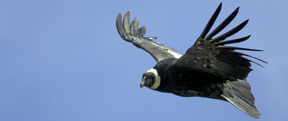
Torres del Paine, Chile
December, 2004

It was three years in the making but
we finally put together our first Torres del Paine Photo Tour,
and it was worth the wait. Our trip was timed to coincide with
what is, statistically, the best season for weather, with the
least likelihood of having rain. Well, you wouldn't know it!
We had an unusual amount of rain, and clouds blocked the sweet
orange-red angular light of dawn and dusk most days. We had one
fair magic color dawn, but it didn't last long and wasn't especially
intense. We had one good evening, and one potentially incredible
one, but we missed the best light on that one because of a vehicle
breakdown. In that respect our shots of Torres del Paine were
somewhat disappointing for me, at least for that magic light of
dawn and dusk.
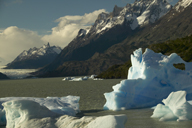 That's
the bad news. And that, to be sure, was far outweighed by the
incredible luck we had with our other shooting subjects. We did
get the mountain in several types of weather, getting both the
'horns' and the 'towers' of Torres. Our boat trip to the face
of Gray's glacier we were treated to an assortment of ice faces,
as the retreating glacier now reveals stony rock fronts at several
spots. Gray's lake's terminal moraine can be the trap for incredibly
diverse and picturesque icebergs in a good year-or little, and
this year it was great. We spent an extremely productive afternoon
with wonderful light shooting the 'bergs - a real bonus for we
had a chance to do so twice. On our first visit we did a recon
of the icebergs but only a few people may the hike, and little
shooting was done. This stressed me, because I worried that our
only shooting window for the bergs was not exploited. Luck was
with us, though, and we had a great shoot later on in the week.
That's
the bad news. And that, to be sure, was far outweighed by the
incredible luck we had with our other shooting subjects. We did
get the mountain in several types of weather, getting both the
'horns' and the 'towers' of Torres. Our boat trip to the face
of Gray's glacier we were treated to an assortment of ice faces,
as the retreating glacier now reveals stony rock fronts at several
spots. Gray's lake's terminal moraine can be the trap for incredibly
diverse and picturesque icebergs in a good year-or little, and
this year it was great. We spent an extremely productive afternoon
with wonderful light shooting the 'bergs - a real bonus for we
had a chance to do so twice. On our first visit we did a recon
of the icebergs but only a few people may the hike, and little
shooting was done. This stressed me, because I worried that our
only shooting window for the bergs was not exploited. Luck was
with us, though, and we had a great shoot later on in the week.
Scenics require cooperative weather and if our trip had been based
solely on landscape shooting we'd have had a modestly successful
trip at best. Fortunately, though, last year on Mary's scouting
trip (I'd done the same trip the year before) we met a local Chilean
wildlife photographer who befriended us and who then acted as
our local guide for our tour group. Our guide had spent nearly
20 days in the park before our tour scouting and leading another
photographer so he knew where everything was likely to be. It
was, so we wasted no time looking for the birds and mammals we
hoped to shoot and only the Patagonian red fox (aka Andean wolf)
eluded us. As it turned out, I got the fox the day the photo tour
group left for home!
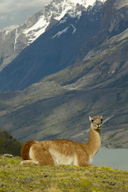 The
wildlife of Torres del Paine is no where near as diverse as one
finds on an East African photo safari. Southern South America
is a land of extremes and species diversity at the end of the
world is rather limited (just as it is in Denali - see our Question
of the Month). Torres has its own 'Big Seven,' they being Patagonian
gray fox, Patagonian red fox, guanaco, huemule, Andean condor,
Magellanic woodpecker, and puma. Our group 'nailed' four of these,
and I had six with three extra days of shooting.
The
wildlife of Torres del Paine is no where near as diverse as one
finds on an East African photo safari. Southern South America
is a land of extremes and species diversity at the end of the
world is rather limited (just as it is in Denali - see our Question
of the Month). Torres has its own 'Big Seven,' they being Patagonian
gray fox, Patagonian red fox, guanaco, huemule, Andean condor,
Magellanic woodpecker, and puma. Our group 'nailed' four of these,
and I had six with three extra days of shooting.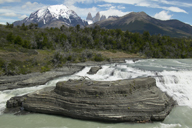
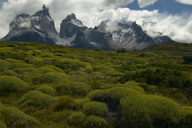
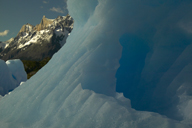
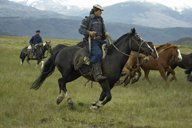
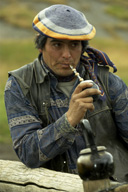
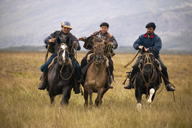
We arranged for a photo shoot with a
trio of gauchos, the Patagonian cowboy, who herded horses across
a field and toward us for several passes. The gauchos got into
it, and before we finished the horse drive we had the gauchos
galloping straight at our cameras, breaking and veering off at
the last second. Literally! On the last gallop one of the gauchos
almost lost control (I have a shot as he hangs half-off his horse
as he swerves hard to the right) as the horses zipped by. Dirt,
grass clods, stuff was flying - and with flying hooves zipping
passed it was a great, fun shoot.
After the horse drive we returned to the stables where the gauchos
prepared their mate` -- a traditional hot drink, giving us great
chances for portraits as they sipped their mate` and tended the
small fire they used to heat their teapot. The three hour session
was one of the highlights of the week for 6 of the 7 shooters
- it was that good.
While some scenics require particular weather conditions most
wildlife subjects do not. In fact, many animals are best shot
in cloudy-bright conditions. Having a terrific guide who had located
subjects beforehand, and having some unbelievable luck with some
subjects that can't be pinpointed, we truly maximized our shooting
opportunities.
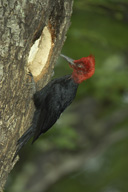
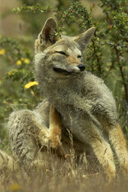
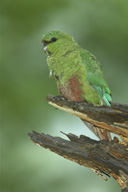
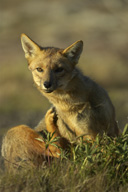
Two years earlier, on my first trip to
the area, I found a Magellanic woodpecker nest that I was unable
to photograph. Magellanic's are huge, larger than our pileated
woodpecker, and they can be incredibly tame. Although it was a
thrill to see one, and to discover a nest, I was haunted by the
missed opportunity. This year that ghost was laid to rest, as
our guide had located a very shootable nest. That shoot was the
highlight of the photo tour for me.
When you think about this, the shooting opportunities are pretty
incredibly unique. Pileated woodpeckers - an analogous species
- are found throughout much of North America. I've had one nest
near our home at Hoot Hollow which I did not shoot, and I've never
photographed one at a nest, and I'm certain no one in our group
had either. Here, in Torres del Paine, our group filmed a pair
at their nest!
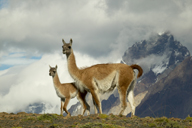
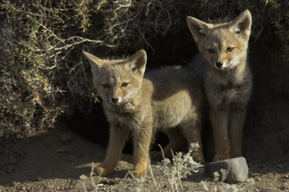
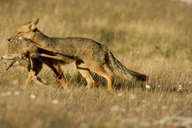
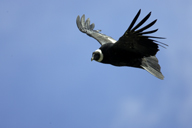
I've never filmed a fox den either, and I'd bet neither had anyone else in our group, but we did on the tour. On three separate occasions we photographed Patagonian gray fox (an entirely different species from the US gray fox), including two shoots with adults and one with two pups at the den. As we filmed these I couldn't help but think - I've never done this in the States!
We saw Andean condors almost daily, but
usually as distinguishable silhouettes as they soared high overhead.
At Gray's glacier we had a nice male fly by low and close enough
to see its distinctive white secondary feathers, which was videoed,
but these were merely record shots. Things would change.
On our last full day in the park (on the tour) we had some of
our best weather. Our destination was some of the overlooks where
we could photograph the towers of the massif, but en route, at
each stop, other subjects popped into view. We had incredible
opportunities with young guanacos in fields of flowers and adults
framed against the towers themselves. At a scenic cascade - the
best waterfall that is easily accessible, we spotted a condor
as it landed on the top of a not-too-distant hill. Another bird
joined it, and then a third. Other condors appeared, and all seamed
to be headed to the same spot.
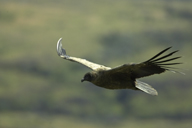
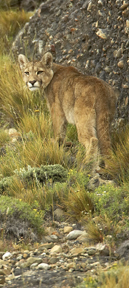 We
started that last day with a 3:30AM wakeup and 4AM departure,
scanning the still black landscape for tell-tale green eyeshine.
Once we thought we had luck - Mary spotted green eyes, but they
belonged to a fox. Our hopes were to spot a puma as it walked
back to its day lair and to follow the cat until it eventually
came to rest. We didn't spot a cat.
We
started that last day with a 3:30AM wakeup and 4AM departure,
scanning the still black landscape for tell-tale green eyeshine.
Once we thought we had luck - Mary spotted green eyes, but they
belonged to a fox. Our hopes were to spot a puma as it walked
back to its day lair and to follow the cat until it eventually
came to rest. We didn't spot a cat.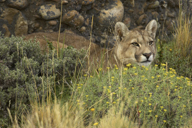
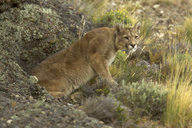
Still, it proved to me that photographing
the puma in the wild could be done, and that a group could even
do it provided they had the time and the energy. Remember, in
the two days that we devoted exclusively to the cat I didn't shoot
a single picture on the first day and only photographed the puma
on the second. Had I had my gear I would have ran out of flash
cards, but since I didn't have my gear, I only shot 50 or so images.
We hiked a total of about 17 man-hours (I'm counting the hiking
time for our guide and tracker who were looking while I was waiting
for Mary to meet up with them at the car) and personally I did
about 6 miles of walking/searching before I had any luck. And
even then, we were lucky.
Next year I'm going back, either with a group or alone. At this
point I'm hoping to do another photo tour and then add some extra
days for puma, that will be offered to the participants provided
they understand all that a puma search involves - including disappointment!